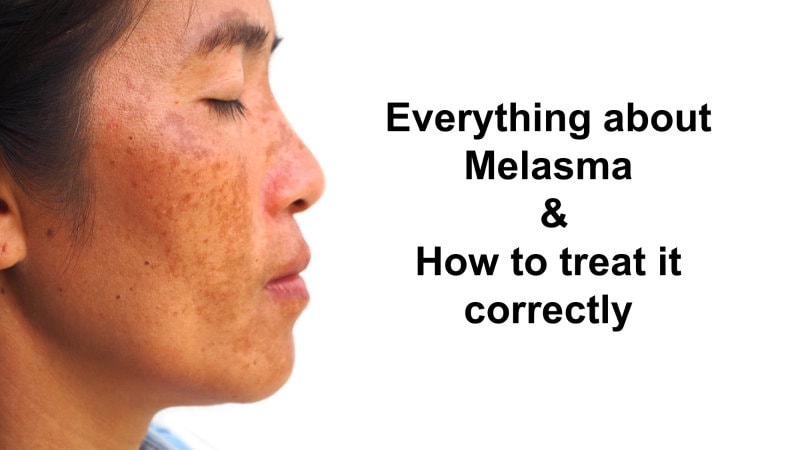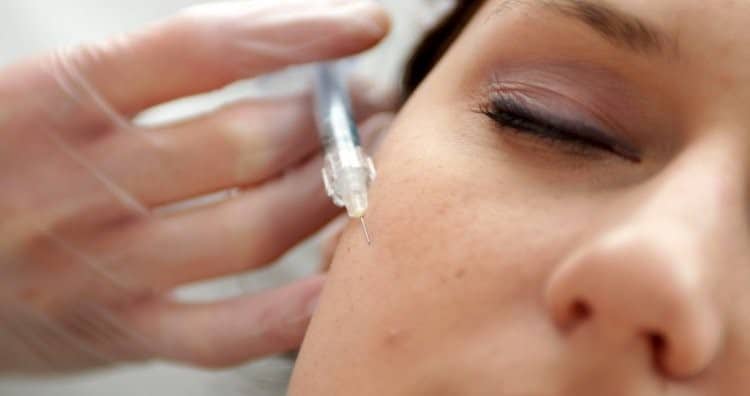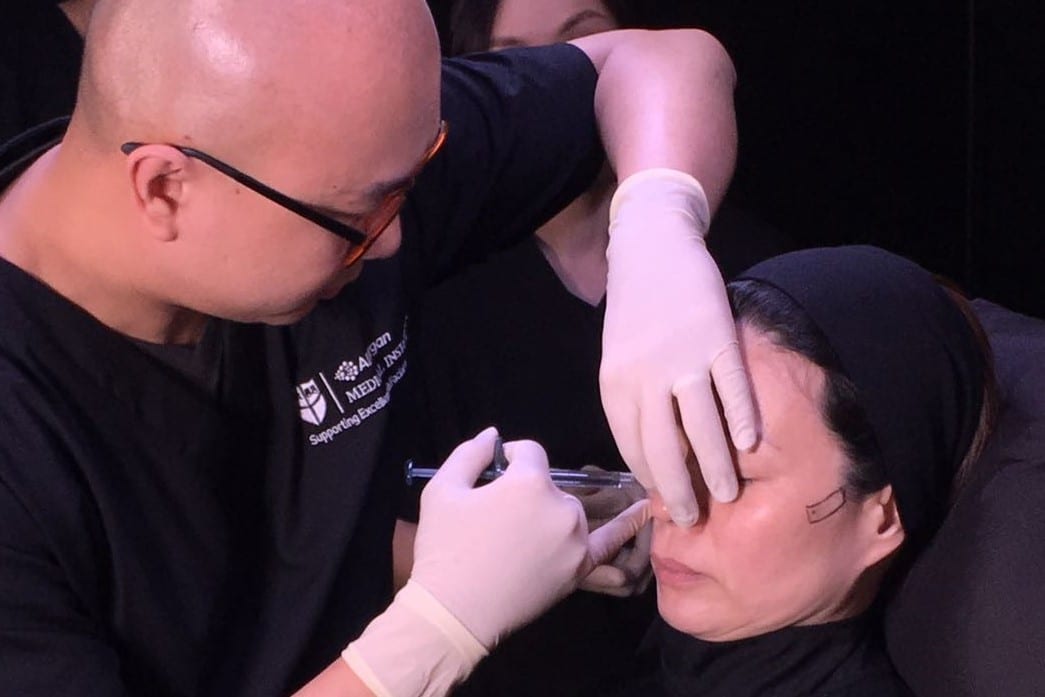Wasted $5,000 on ‘Pico’
During one of my clinic sessions, a new patient came for her appointment to consult with regard to her facial pigmentation. She was told to have melasma, and paid close to $5,000 for multiple sessions of a ‘new Pico treatment’ that was sold to her in another clinic a few months ago.
At the end of her course of treatments, she developed further darkening in some areas of her melasma patches. Needless to say, she did not feel that her melasma had improved.
She wanted to immediately embark on another set of laser treatments, and asked me if I have something better than ‘Pico Laser’.
I explained to her that she should not start on another course of laser treatments now. I incorporated a lightening agent, retinoid, and antioxidant formulation into her skincare routine. I also changed her sunscreen and her frequency of sunscreen application.
She has been on follow-up with me for 6 weeks, with fair improvement in her facial pigmentation. I may add a laser treatment in future if further lightening of her dark pigment patches is warranted.
Firstly, what is melasma?
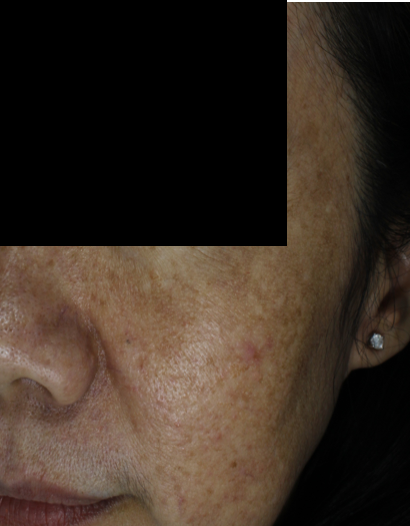
Melasma is a type of hyperpigmentation that is very common among Asians. They appear as symmetrical, blotchy, brownish patches on the face, and sometimes the neck, chest and even forearms.
Women are at a higher chance to have melasma, the ratio of women to men having melasma is 9:1 in some studies. Onset is during childbearing years, and is frequently described as ‘mask of pregnancy’. It starts during the mid-30s, and continue to affect individuals into their 60s and beyond.
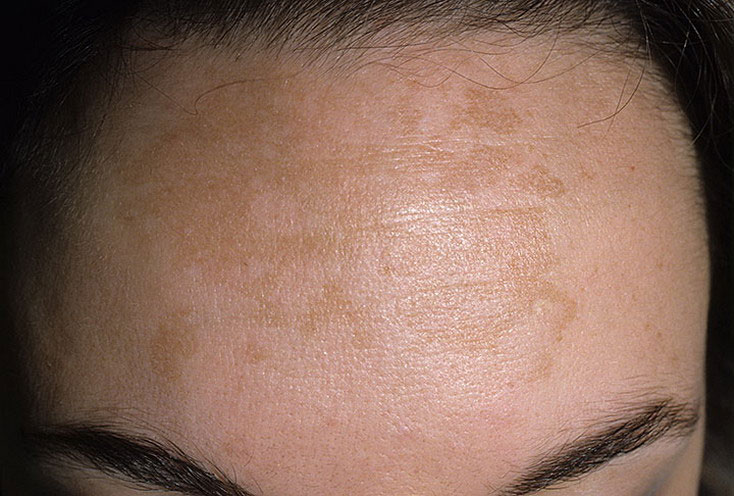
Unfortunately, there is no cure for melasma. The causes are multifactorial and I will list them out in the table below.
Factors increasing chance of melasma
- Asian skin type (especially Fitzpatrick Skin Type III and IV)
- Women
- Child bearing age
- Physically active, history of sun exposure
- Family history of melasma
Other medical conditions
- Pregnancy
- Increased female hormones
- Oral contraceptive pills
- Hormone replacement therapy
- Thyroid disease
- Low testosterone
Why laser treatment for facial pigmentation is so popular
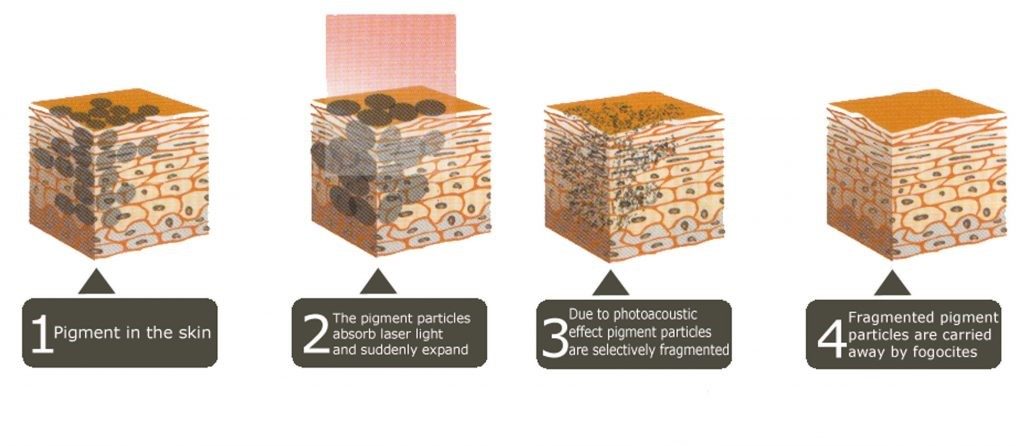
I believe most of you are familiar with Q-switched lasers. These dermatological lasers became commercially available since the 1990s, and has grown wildly popular ever since.
Prior to this period, lasers were thought to be only capable of treating pigmented lesions limited to the skin surface, and it come to everyone’s surprise that it can selectively target tattoo pigments and pigmentation within the skin.
These lasers shown great results in the treatment of various skin pigmentation disorders, like solar lentigines, freckles, even deeper pigmented lesions like ABNOM(Hori’s naevus), and became an invaluable tool in any physician’s clinic who is serious in the treatment of pigmentary disorders.
Why MOST laser technologies FAIL to treat melasma.
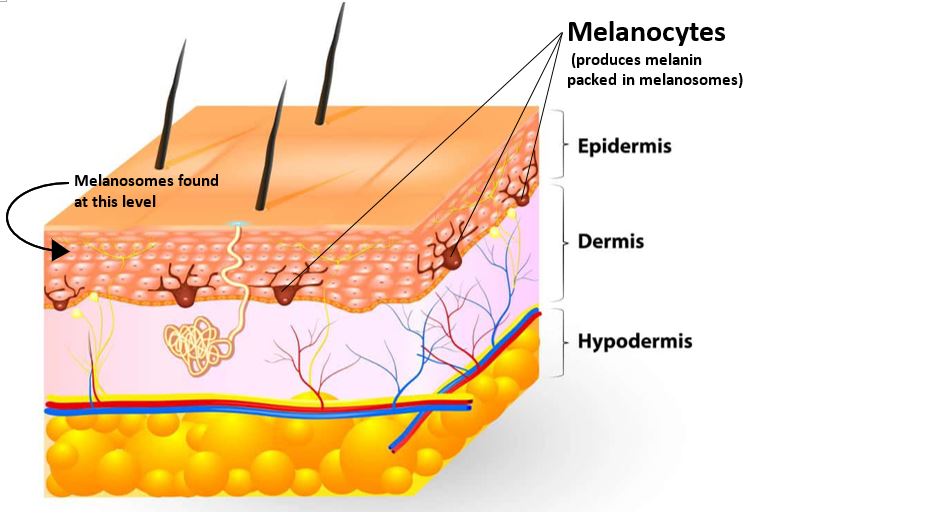
Look at the diagram above: The topmost layer of the skin is called the epidermis. In this layer, there are the keratinocytes, the so call ‘normal skin cells’. And each of the skin cells have a certain amount of melanin pigment within the cell. This melanin pigment is actually produced by the melanocyte cell, which is found at the bottom part of the epidermis.
One of the most popular treatment method involving Q-switch laser is: LASER TONING. In this no-downtime protocol, the laser is applied in such a way as to break down melanosomes, which contain the melanin pigment, within the epidermis of the skin. This is done without causing any redness or bruising to the patients, making it very popular.
But because it doesn’t address any of the root causes of melasma, the sensitised melanocyte is still producing a lot of melanin pigment! This way of treating melasma is a sure way for frequent relapses to happen!
What about pico-second lasers? I hear they are the latest technology!
Q-switched nano-second laser machines generate laser energy with pulse widths at the nano-seconds range, that is one billionth of a second (1.0 ns =10−9 s).
To put things into perspective,
1 nano-second = 0.000000001 seconds
Recently, a new wave of laser technology, pico-second lasers, have become commercially available. These lasers generate laser energy with pulse widths at the pico-second range(1.0 ps =10−12 s). The theory is that by having a reduced pulse width of the laser energy, pico-second lasers are more superior to nano-second Q-switched lasers — with reduced side effects and increased efficacy.
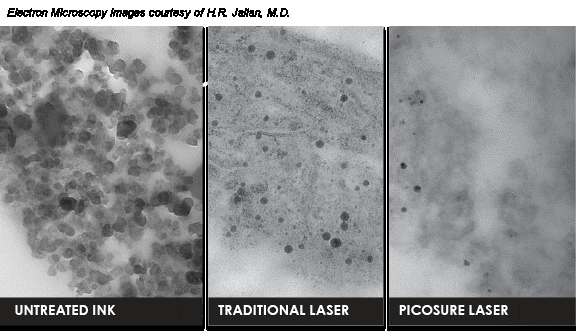
This superiority is targeted at laser tattoo removals. Nano-second Q-switched lasers are good at treating pure black tattoos, but when it comes to multi-coloured tattoos (red, green, blue, etc), nano-second lasers are not able to treat them fully. In theory, by having a shorter pulse width, many different colour-types of tattoo pigments can be treated. That is the premise on which the pico-second lasers were developed, and marketed.
Why Pico laser treatment IS NOT the answer to your melasma.
Although pico-second lasers have started to make inroads into the clinics, I feel that the technology is not at its most refined yet. Theoretically, the pico-second laser technology sounds great, however:
Points to note:
- Pico-second lasers are supposed to be better at removing multi-coloured tattoos conventional nano-second Q-switched lasers. However, their advantage to remove skin pigmentation has not been firmly established yet.
- Some medical evidence suggest Pico-second laser technology is not fully ready yet
- On treating skin pigmentation, one study concluded that using pico-second lasers to treat skin pigmentation is ‘premature anticipation’, and requires more basic studies to be performed [1}
- For tattoos, one study concluded that ‘there is sparse evidence that pico-second lasers are more effective than their nano-second counterparts for black and blue tattoo removals.’ [2].
- I have to point out here that the studies mentioned above are not sponsored by, and not affiliated to any laser manufacturers or companies, so we can be assured about the unbiased truth of the study conclusions drawn.
- Since pico-second laser treatments for skin pigmentation disorder is a new concept, literature available is limited to case reports or case series (collection of case reports).
So far, the published evidence is WEAK.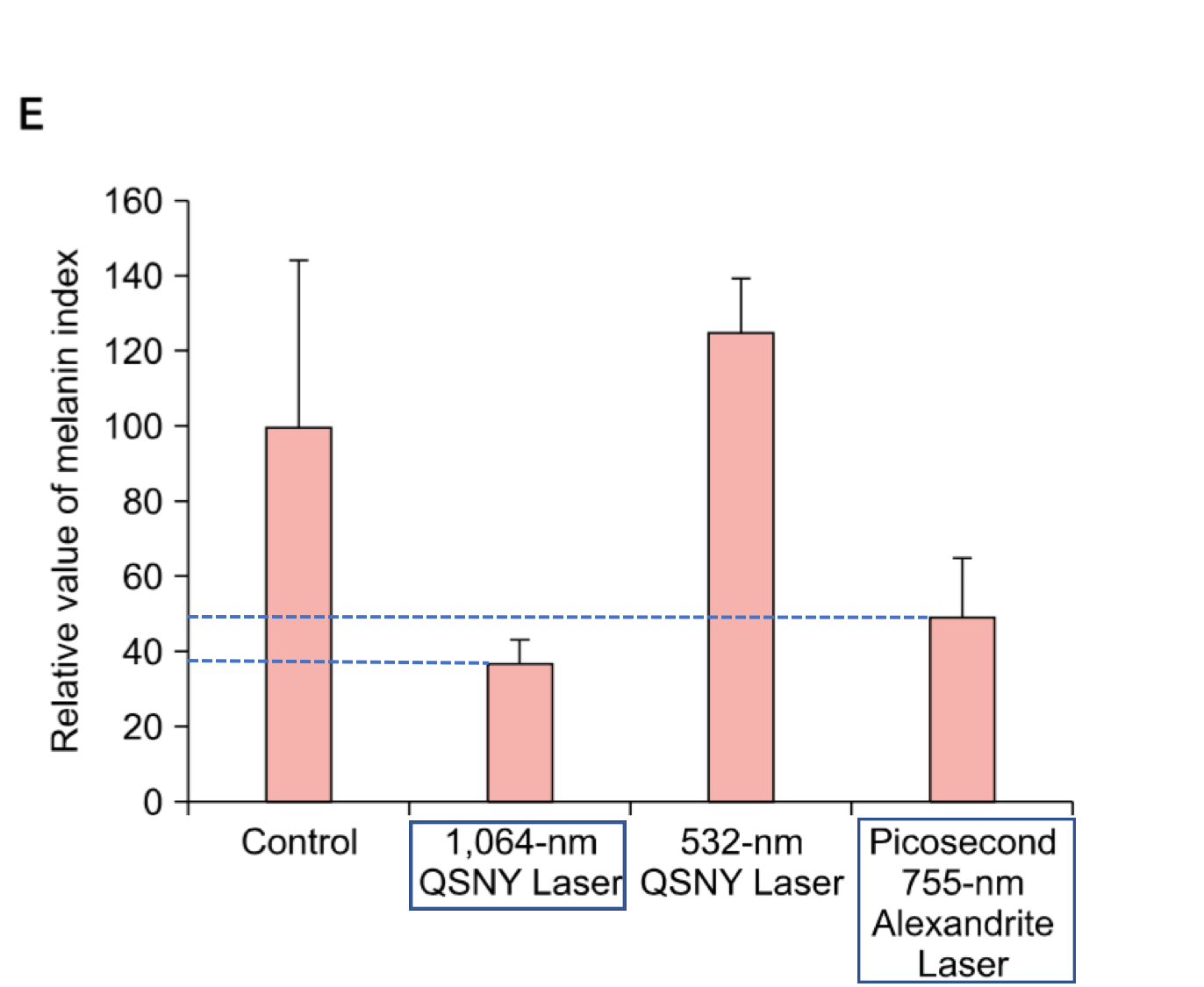 Take for example the data chart shown above. This is done in one of the studies [3] and measures the amount of melanin in the skin 7 days after different laser treatments. From the chart it actually shows that QS 1064 Nd:YAG laser is MORE SUPERIOR than a pico-second laser in reducing melanin pigment!
Take for example the data chart shown above. This is done in one of the studies [3] and measures the amount of melanin in the skin 7 days after different laser treatments. From the chart it actually shows that QS 1064 Nd:YAG laser is MORE SUPERIOR than a pico-second laser in reducing melanin pigment!
Look, I am in no way against pico-second laser machines. I have been looking for a pico-second laser for my own clinic ever since I started my own practice. In fact, I have tested no less than 6 different pico-second laser machines, trying to find one that suit my clinic’s treatment needs. I feel that in the near future, a truly great pico-second laser will emerge, and I will be more than happy to buy it. But perhaps the time is NOT now.
Moving on…
It is Melasma’s fault, not Pico Lasers
This is true. Melasma is one of the most difficult cosmetic pigmentation in the world to treat as it is multifactorial. Just look at the diagram below showing the risk factors that can trigger or contribute to melasma. THERE ARE MANY. The factors that cause melasma to occur in the first place will continue to stimulate the skin to develop melasma pigment as long as the individual is exposed to them.
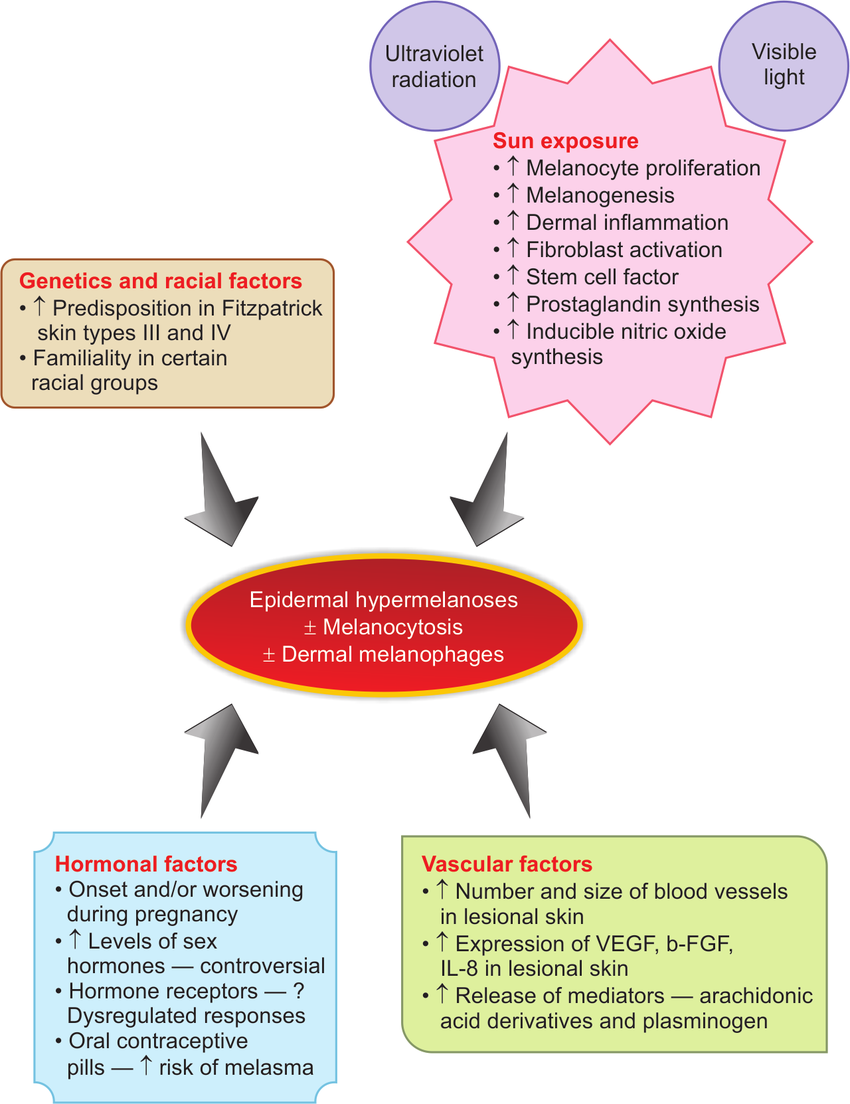
Laser and light therapies directed at reducing pigment and melanin molecules within the skin, cannot prevent the formation of new pigments within the skin. The melanocytes, which produces the melanin, are continuously stimulated or irritated to produce large amounts of melanin (picture shown above). That is why blindly applying laser beams on melasma lesions almost always lead to failure of treatment. Remember: laser and light treatment is NOT first line treatment for melasma. And any clinic or doctors who blindly sell you laser treatments without understanding the underlying nature of your melasma will only set you up for failure.
The Best Melasma Treatment in Singapore
Unfortunately, there is not a single treatment that can be said to be the best in removing melasma. So I would suggest to not waste your time in looking for one. Always remember: a sound medical approach is the BEST way to manage towards melasma , not the latest or most expensive laser machine!
Dr Heng’s Systematic Approach to Melasma Treatment
Start with the Correct Diagnosis
Melasma is diagnosed based on clinical examination alone. I usually will use a Wood’s lamp and other vision enhancement aids to help me examine the severity and depth of the melasma. At the diagnosis stage, I am also able to see the presence of other pigmented skin conditions, which can influence my treatment plan for the patient.
So what are some of the other common pigmented skin conditions we see?
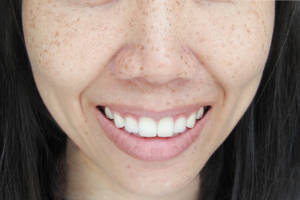 Freckles Freckles |
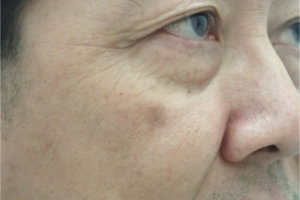 Sun spot or solar lentigo Sun spot or solar lentigo |
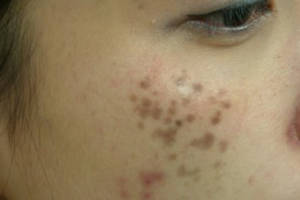 ABNOM or Hori’s Naevus ABNOM or Hori’s Naevus |
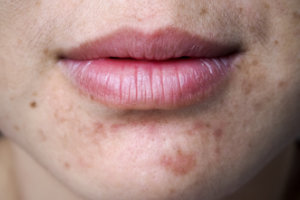 Post inflammatory hyperpigmentation (PIH) Post inflammatory hyperpigmentation (PIH) |
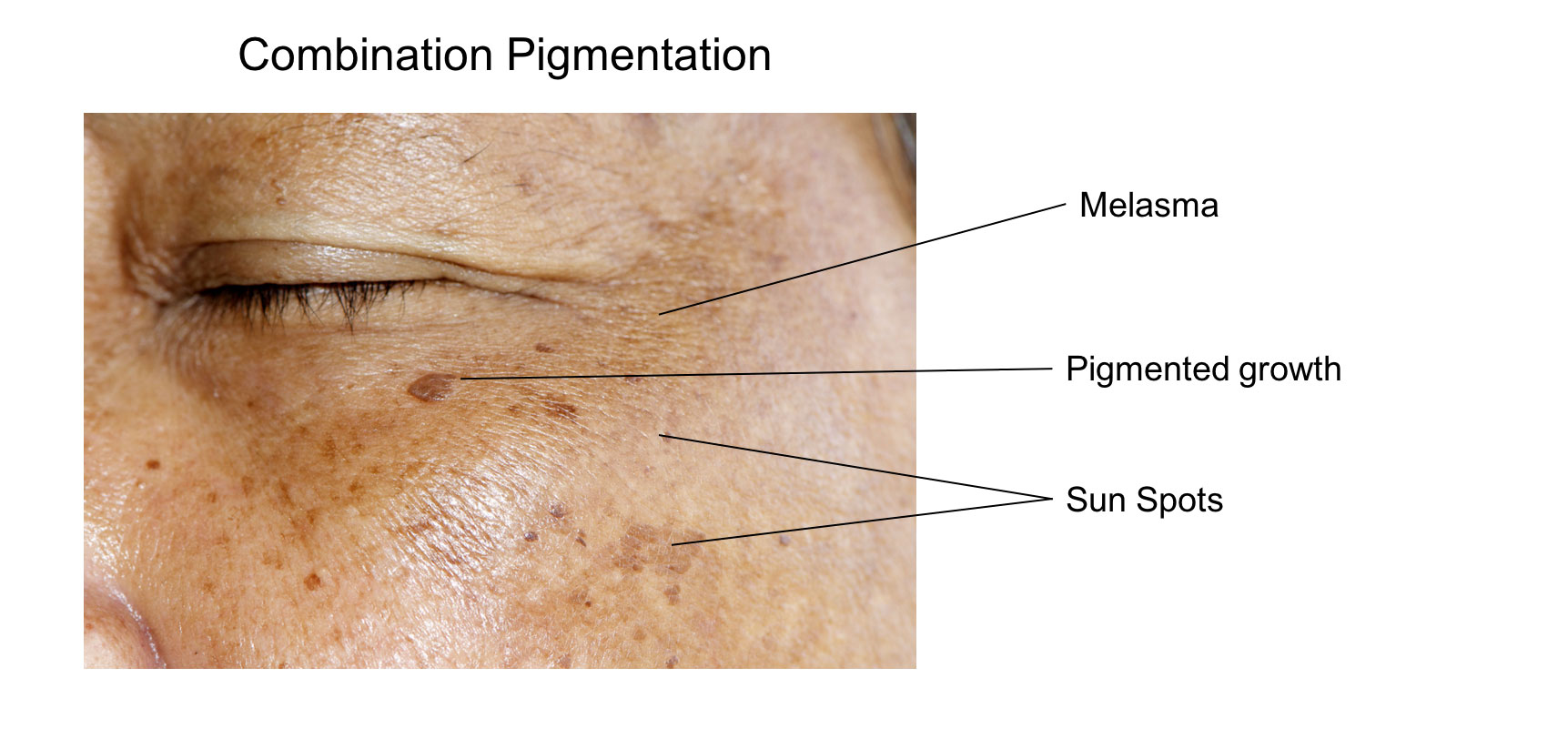
As you can see, melasma is not the only pigmentation that can occur on your face. Frequently, my patients present with a combination of different pigmentation conditions.
Because each of the above pigmentation has different characteristics, when we do use laser procedures to treat them, we require different types of lasers to manage.
A good doctor should be able to identify the various lesions and devise a treatment plan that can treat all lesions comprehensively.
Reduce ALL risk factors (as much as possible)
Hormonal factors are a leading cause of melasma development, It is very common for the condition to flare up when a woman is pregnant or on oral contraceptive pills.
For melasma arising from pregnancy, very frequently, the pigment patches will lighten and improve after childbirth.
If the melasma condition is brought on by oral contraceptive pills, these pills will have to be stopped and other forms of contraception has to be advised.
Besides the melanocytes being stimulated by hormonal changes to produce melanin pigmentation readily, recent studies have also shown that non-pigment producing cells- the keratinocytes (normal skin cells), and blood vessels also play a role in the development of melasma.[4]
Therefore a complete melasma treatment should also target treating the skin cells (keratinocytes) that have large amount of melanin pigment, and also reduction of number of blood vessels in the skin[5].
Adequate sun protection
Sunscreen, sunscreen, sunscreen! I cannot emphasize enough the importance of sun protection. Choose a broad-spectrum sunscreen, that is able to block out both UVB and UVA rays. I shall cover more about sunscreen in future posts. For now, pearls to sunscreen success are as such:
- Use a broad-spectrum sun screen
- At least SPF 15
- Apply sunscreen at least 20 minutes before going out to the sun!
- Frequently reapply!
Pigment removal through doctor’s prescriptions
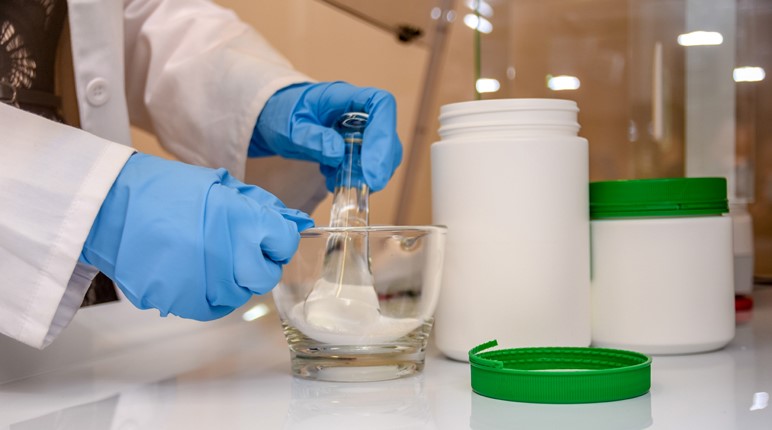
Such prescriptions are usually in the form of creams to target the various pathways of melasma development. Hydroquinone is an effective skin lightener, and although there were concerns about its long-term application, it still remains the gold standard in clearing pigmentation like melasma, solar lentigines and some freckles. It can be effectively combined with retinoids and a mild corticosteroid. Doctors use different variations of this combination.
Besides the usual hyroquinone, and retinoids, there are other agents that has been shown to work to a smaller degree:
- Kojic acid
- Arbutin
- Azelaic acid
- Ascorbic acid (Vitamin C)
Your doctor should be knowledgeable in how these lightening agents function, how they interact with your pigment to remove them, and also have a good knowledge in how to combine them to clear your melasma in a convenient way.
I sometimes prescribe oral medications for patients. One classic example is tranexamic acid. This oral medication was found by accident to be useful in lightening melasma lesions. Further studies done showed that it helps to treat melasma by inhibiting plasminogen activator and prevents pigment formation [6].
What about chemical peels?
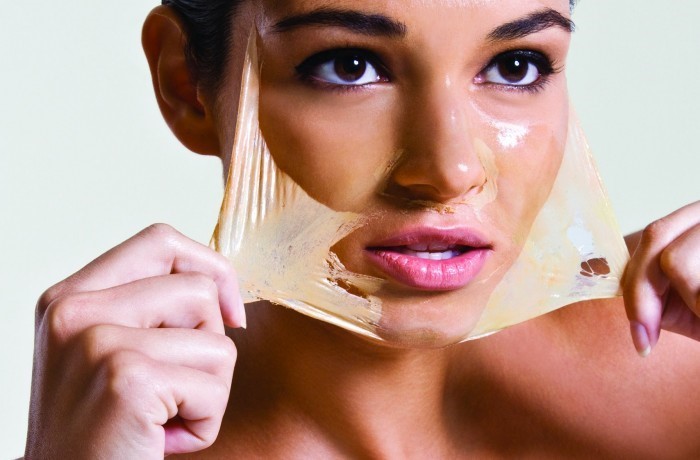
Chemical peels are what I will group as second-choice management therapy for melasma, similar to laser and light therapy. Options include, but not limited to:
- Glycolic acid
- Malic acid
- Lactic acid
- Jessner’s peel
In principle, these chemical peeling agents cause superficial skin effects, thus it enables removal of epidermal melanin (remember the skin layers?)
However, if the patient present to my clinic with dermal melasma, I will tend to avoid chemical peels. At this depth, there is risk of injury to the skin. This usually manifest as a type of pigmentation known as post-inflammation hyperpigmentation, or PIH for short. PIH is especially common among Asian skin. NOT a good trade-off when you get another pigmentation while trying to treat your melasma.
So, WHEN do we use LASERS to treat MELASMA?
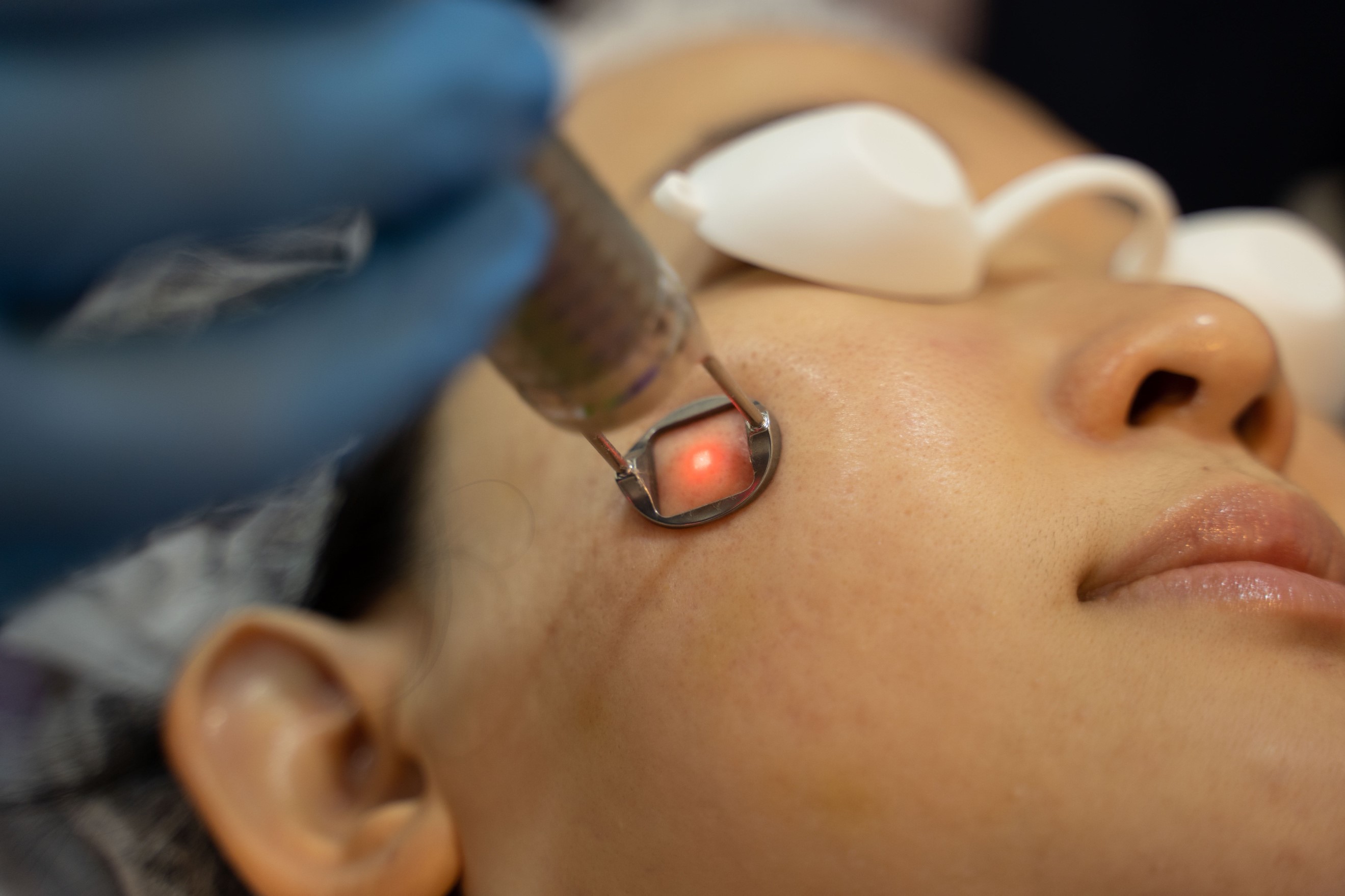
There are not many situations where I will start using lasers to treat melasma. The following are some of them:
- Recalcitrant melasma. Where the melasma has poor response to topical creams and medications after 6-8 weeks of therapy
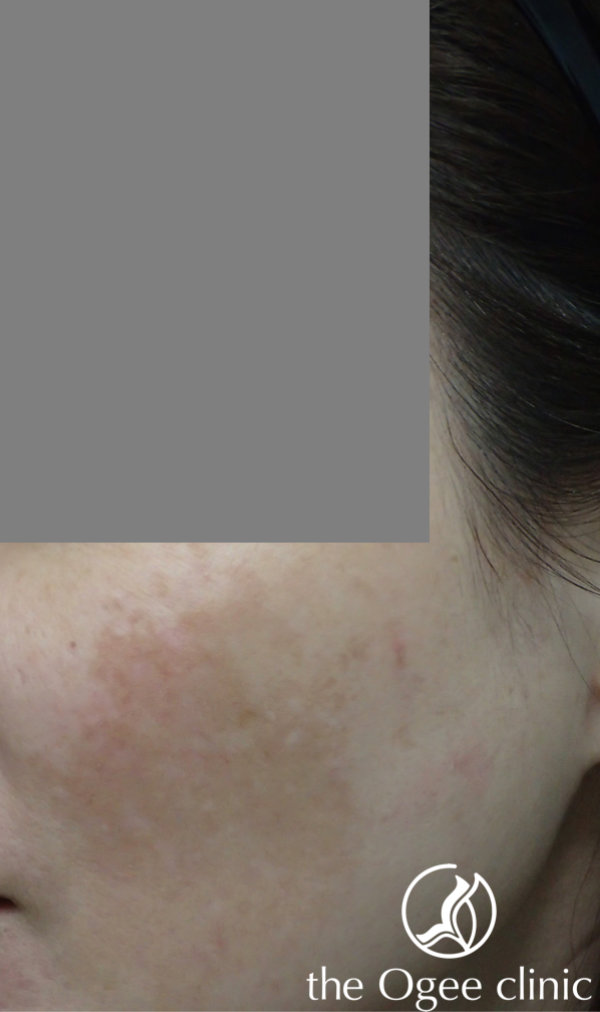
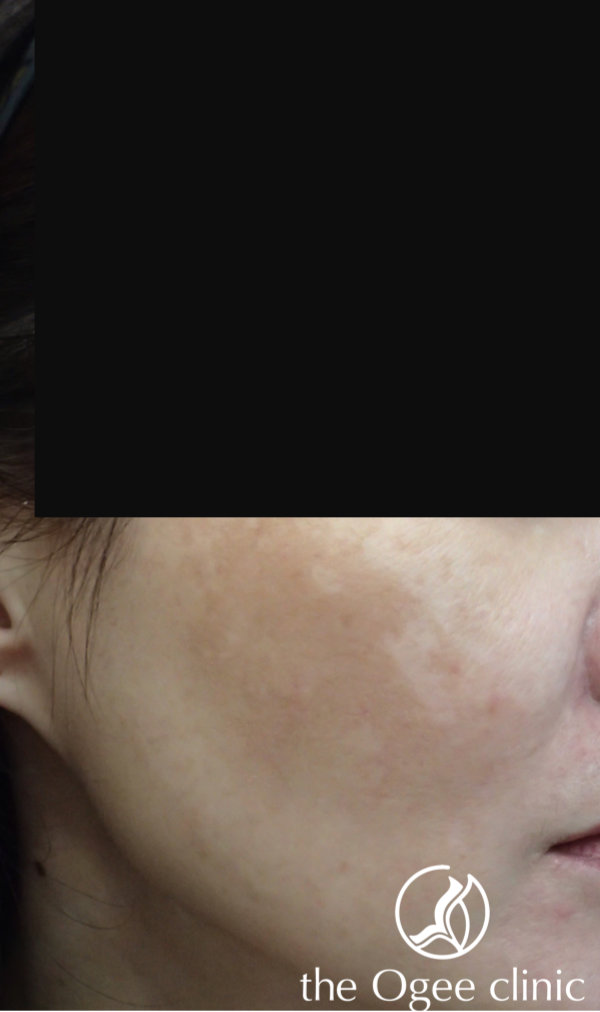
- Other pigmentation disorders. Where the lasers can improve other pigmentation for the patient while the melasma is being treated simultaneously. (e.g. freckles, sun spots, Hori’s)
- Patients want a faster clearance of their melasma. Usually for patients who want to prepare for an upcoming event, like a wedding, or DnD event. Not the best-case scenario, as I always advise patients to get their melasma treated early, at least 4-6 months. In these situations, I will have to incorporate laser treatments into the main treatment approach.
So what are some of the lasers that can be used to improve melasma?
The following is a non-exhaustive list of lasers that had been shown to work in reducing and improving melasma, either singly, or in combination with other lasers.
Q- Switched 1064nm Lasers
- DuoliteQSby DEKA
- Neosys by FineMEC
- Helios III by LaserOptek
- Spectra by Lutronic
- Revlite by Cyanosure
- Tribeam by Jeisys
- M22 QS ND:YAG from Lumenis
Non Q-switched 1064nm Lasers
- Fotona SP Dynamis by Fotona
- ProYellow Laser by Ascelpion Technologies
- Dual Yellow Laser by Norseld
- Fraxel Dual by Solta Medical
- Lavieen BB Laser by WonTech
Combination Lasers pave the way to SUCCESS.
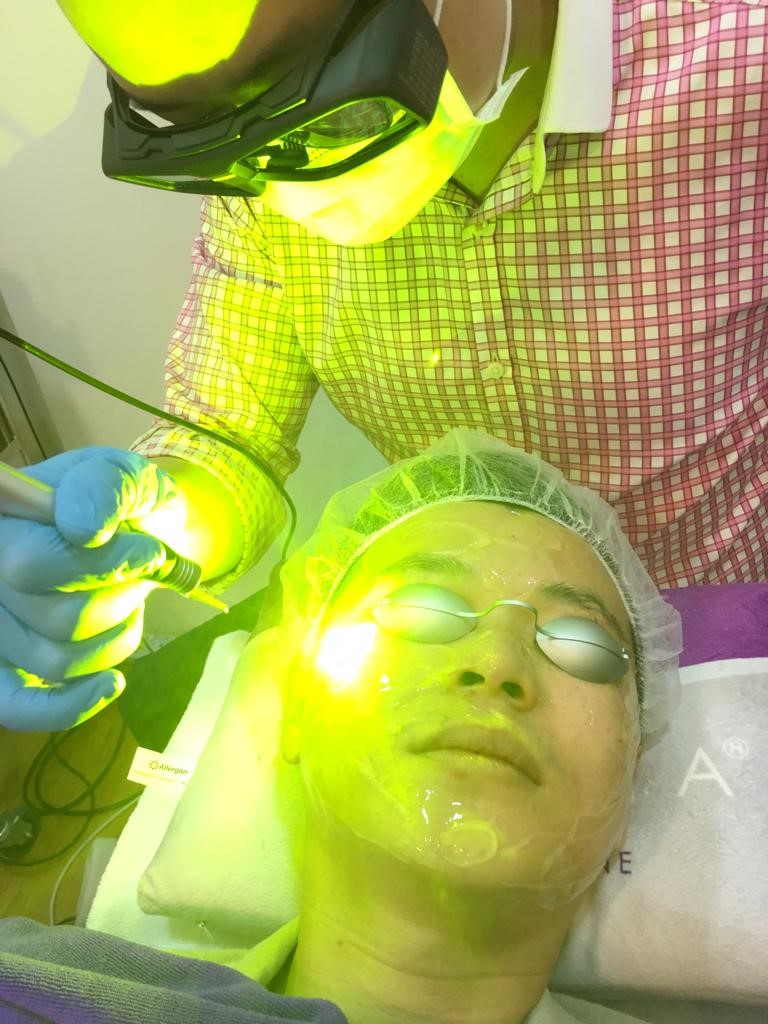
That’s a lot of lasers you say?
Yes, no doubt. And for good reason too. Remember earlier in the article where we talked about melasma being multi-factorial? That’s right. Now if we want to successfully treat melasma and prevent complications, the best way is to use combination laser therapy to target the various pathways that cause melasma to develop.
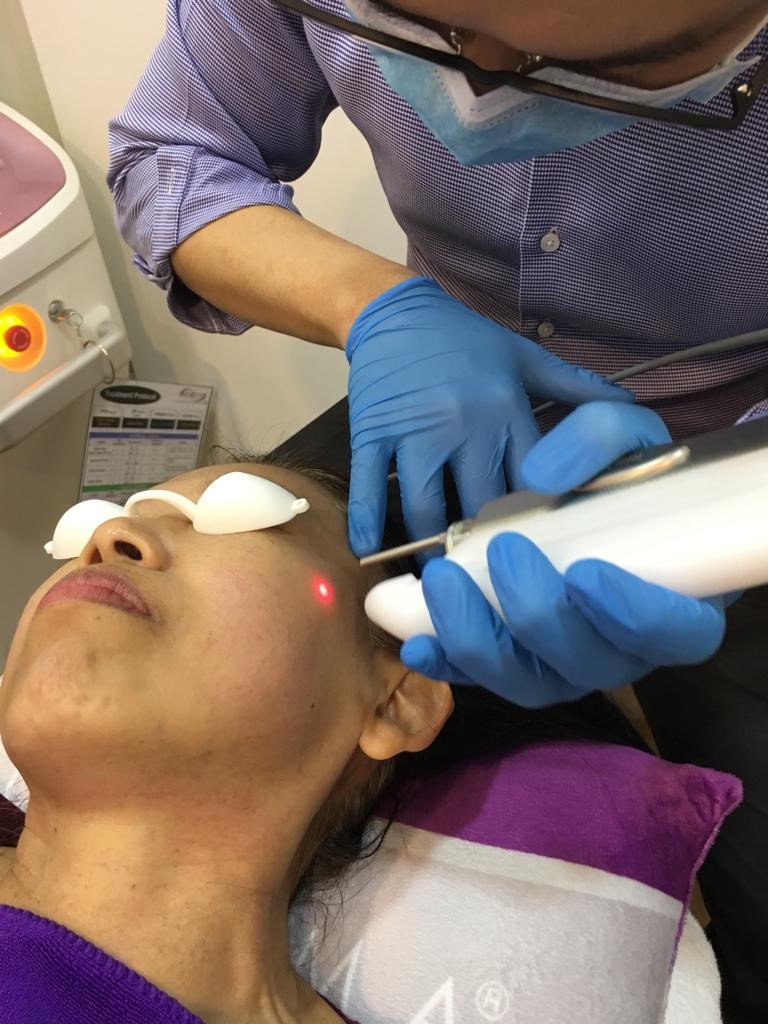
Combination laser treatment is a cornerstone approach that I take for all my melasma patients undergoing laser treatments, every time.
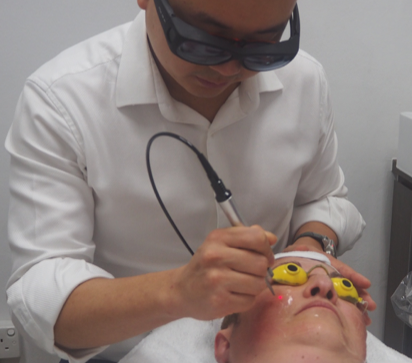
I am not saying that my approach is the best. Each doctor will have his or her own approach when it comes to laser treatment, determined by the knowledge and experience with the laser, and an in-depth understanding of skin physiology. And as a patient you have to find a doctor and aesthetic clinic that you are comfortable with and confident in.
Another point to note:
All the lasers listed above, are in my opinion, very well-manufactured devices, and from reputable brands. Many of them are what I consider reliable, traditional nano-second Q-switched lasers. I made it a point not to include ANY Pico Laser to the list. Again this points to the fact that that successful treatment of melasma can be achieved even without the most-hyped, and most expensive laser machines.
Melasma has no cure, but it is NOT the end of the world.
Yes, melasma is a complex condition. Its pathogenesis is not completely understood. However, for patients who are compliant to doctors’ instructions, stay away from the sun and irritative cosmetics, follow a disciplined approach to topical creams prescribed, and if need be, sound and effective in-clinic procedures, they usually see very visible improvement to their melasma, and can maintain their good skin complexion for a long time.
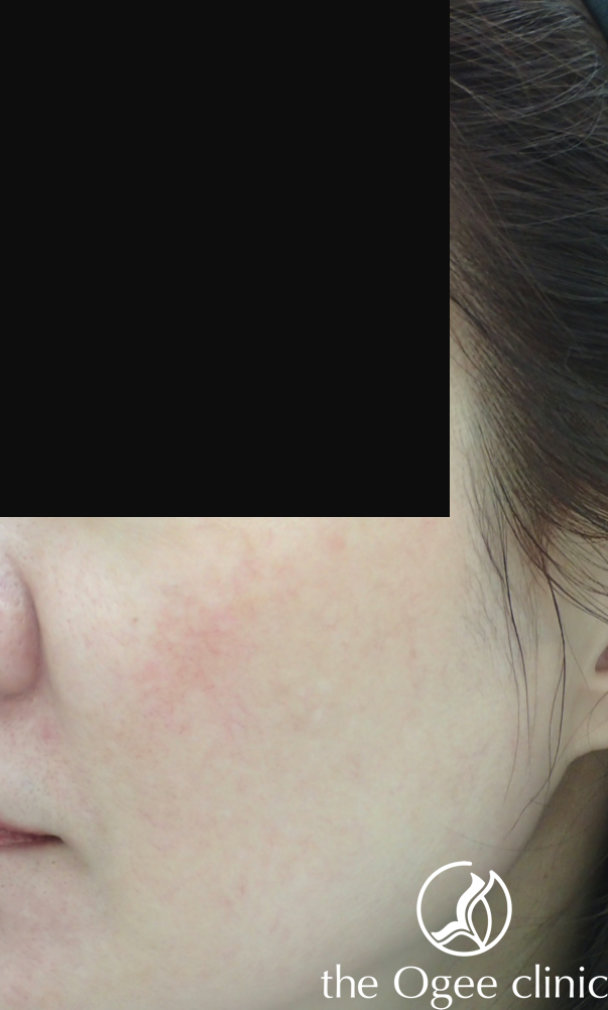 |
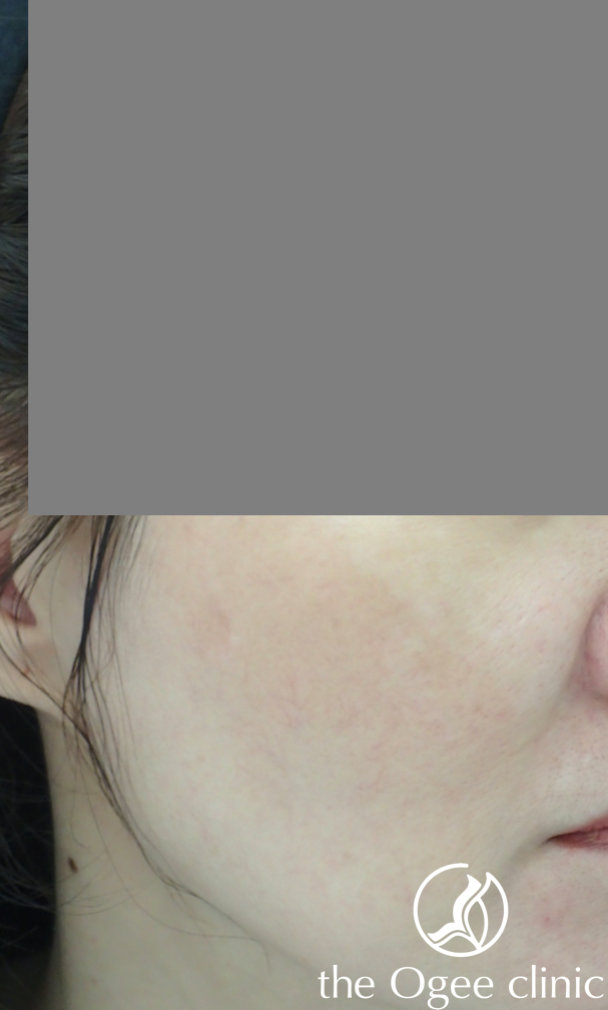 |
Always remember: the key to the successful treatment of melasma does not depend on the latest, most expensive laser technology. Instead, a sound medical approach, skincare discipline, and expertise and experience of the doctor in treating pigmentation is FAR MORE IMPORTANT.
If you are suffering from recalcitrant melasma or other pigmentation problems, do find out how our treatment for pigmentation removal can help you.
References
[1] Kasai K. Picosecond Laser Treatment for Tattoos and Benign Cutaneous Pigmented Lesions (Secondary publication). Laser Ther. 2017;26(4):274-281
[2] Reiter, Ofer & Atzmony, Lihi & Akerman, Lehavit & Levi, Assi & Kershenovich, Ruben & Lapidoth, Moshe & Mimouni, Daniel. (2016). Picosecond lasers for tattoo removal: a systematic review. Lasers in Medical Science. 31
[3] Lee, Ye Jin et al. “Treatment of Melasma and Post-Inflammatory Hyperpigmentation by a Picosecond 755-nm Alexandrite Laser in Asian Patients” Annals of dermatology vol. 29,6 (2017): 779-781.
[4] Geddes E, Stout AB, Friedman PM. Retrospective analysis of the treatment of melasma lesions exhibiting increased vascularity with the 595-nm pulsed dye laser combined with the 1927-nm fractional low-powered diode laser. Lasers in Surgery and Medicine. 2017;49(1):20-26
[5] Young Kang, Hee & Ortonne, Jean-Paul. (2010). What Should Be Considered in Treatment of Melasma. Annals of dermatology. 22. 373-8.
[6] Perper, M., Eber, A.E., Fayne, R. et al. Tranexamic Acid in the Treatment of Melasma. A Review of the Literature. Am J Clin Dermatol (2017) 18: 373

